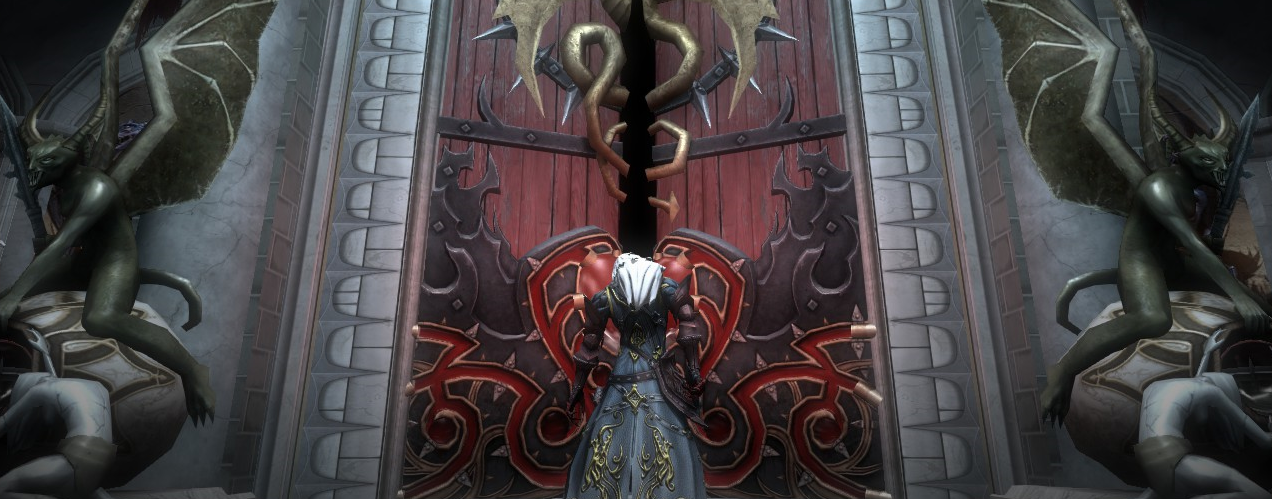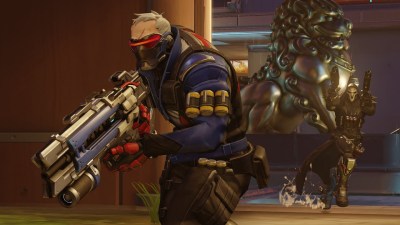Up until 2010, Castlevania games were being routinely released as animé style 2D action-adventure games for handheld systems. Then, Castlevania: Lords of Shadow came along for the Xbox 360 and PlayStation 3, sporting a gritty, realistic art style and God of War-style 3D action-oriented gameplay – all divisive changes to the series.
The 2013 sequel, Castlevania: Lords of Shadow – Mirror of Fate for the 3DS, attempted to reconcile the two types of Castlevania into one gritty, 2.5D action-adventure game. Set 25 years after the conclusion of Castlevania: Lords of Shadow, Mirror of Fate acted as a precursor to the then unreleased Castlevania: Lords of Shadow 2.
And now in 2014 Castlevania: Lords of Shadow – Mirror of Fate HD, a HD version of the 3DS game has been released for the PC. But, as we found out, holding a mirror up to it shows up a few bruises; some the result of being knocked around in the porting process.
The porting effort is rudimentary, with limited customization options; toggling resolution and MSAA is about all you get. The controls set-up shows the same disregard for PC optimization; no mouse support, forcing players to hunch awkwardly over their keyboards. If you don’t have an Xbox 360 controller don’t bother.
If you do have the prerequisite 360 controller you’ll be spending 8 unremarkable hours romping through the same castle 4 times, as 3 generations of Belmont men; the protagonist of Lords’ of Shadow, Gabriel Belmont, his son Trevor, and Trevor’s son; Simon Belmont.
There was huge narrative potential here; both Trevor and Simon grapple with estranged fathers; Gabriel and Trevor are tied together by their feelings of loss over the same woman. But there’s next to no character development: there’s a fleeting moment of emotional payoff when Gabriel mourns the loss of his son, Trevor, but it’s squandered when Gabriel revives him as a vampire. Gabriel then promptly forgets all of their history, and returns to being the antagonistic obstacle in Trevor’s path.
It’s not only in narrative terms that character growth is stunted. In most Metroidvania-style games, you play as one character that amasses skills and power-ups throughout the game - becoming increasingly versatile in both combat and exploration as the game progresses. In Mirror of Fate however, the perspective shifts from one blank slate character to another with each act change. You’ll explore the castle as one character, find their two sub-weapons and two magic skills, and then the characters will be switched and you’ll have to do it all again. Whereas skills for each character are technically different, they aren’t different enough to differentiate the characters using them.
Upgrades to maximum health inexplicable carry across characters, but even then you won’t get a tactile sense of the effects of these upgrades; health increments come in slivers of lifebar, damage from enemy attacks in chunks.
This lack of tactile affinity with your avatar carries over to combat. You whip away at enemies until they die, sometimes in your powered-up form, but you don’t get any sense of how much damage you’re doing; there is no variation in hit effects or enemy flinching animations. And on top of that many enemies have deep health reserves; making combat feel like you’re slapping evil into submission with a pair of wet towels.
When you aren’t in combat you’ll be moving through the castle; not exploring, moving. A good Metroidvania will give you a spatial reasoning exercise; there’s switch in one corner of the room and no direct path, how do you get to it? Figuring that out is the fun part. By contrast, Mirror of Fate tends to place everything in your way; you enter a room with only a box and a closed door, so you move the box to reveal a lever, and the lever opens the door.
Moving through the world in Mirror of Fate feels distinctly like maneuvering through an obstacle course. It’s the kind of superficial exploration used in action-heavy games to create pacing and prevent player burn-out. But if that’s the role the navigation is supposed to play here then the action isn’t plentiful or hard-hitting enough to need the downtime.
So, the exploration fails both as a spatial reasoning challenge and as padding-for-pacing. But regardless of what role it is trying to fulfill, it still isn’t very engaging. You’ll spend most of your time following the navigation marker on your map, which dampens the sense of adventure. You can toggle navigation aids off but you won’t have a better experience for it because many of the paths that open up in Mirror of Fate work by game logic; you get an item so a door in some location on the map that is totally unrelated to that item is now (arbitrarily) open.
Taking mental notes of which areas were inaccessible because you couldn’t jump high enough or punch hard enough isn’t a viable strategy for getting ahead in a game that works like this; the navigation aid is a player concession to counteract the bizarre way the game world opens up, rather than crutch you should be ashamed of using.
When you aren’t running around the same areas, fighting the same handful of enemies and listening to the same four pieces of music, you’ll have to contend with cheap hits or random deaths; using trial and error to work out if you’re falling into bottomless pit or descending safely, messing up a jump because you collided with something you thought was part of the background scenery and getting hit by enemy attacks that look like they shouldn’t hit (conversely dodging attacks that look like they should) are some of the minor nuisances you’ll run into.
You’ll die from falling off things, or onto other things a lot, and you won’t care because you’ll be snapped right
back next to where you were; the speedy load-times yet another area where Mirror of Fate makes player concessions as a way to partially make-up for its faults.
These parts of the game were probably built with the 3DS’s 3D effect in mind and haven’t translated well into 2D. Incidentally, this PC port does not feature 3D support; a really bizarre oversight given the source material.
You’ll persevere to the end because Mirror of Fate, even with its design faults, isn’t a difficult game. But also because Mirror of Fate ends just as it gets going. The unsatisfying ending highlights that the game only exists to bridge the gap between the home console Lords of Shadow games; it tells no resolute tale of its own.
Castlevania: Lords of Shadow – Mirror of Fate HD is middling port of a middling game whose sole narrative preoccupation is being the middle of two other games. The characters you control don’t grow in a narrative or gameplay sense; stuck in the middle of development limbo. And even with all the design problems the game only offers a safe, lukewarm, middle-of-the-road challenge.



